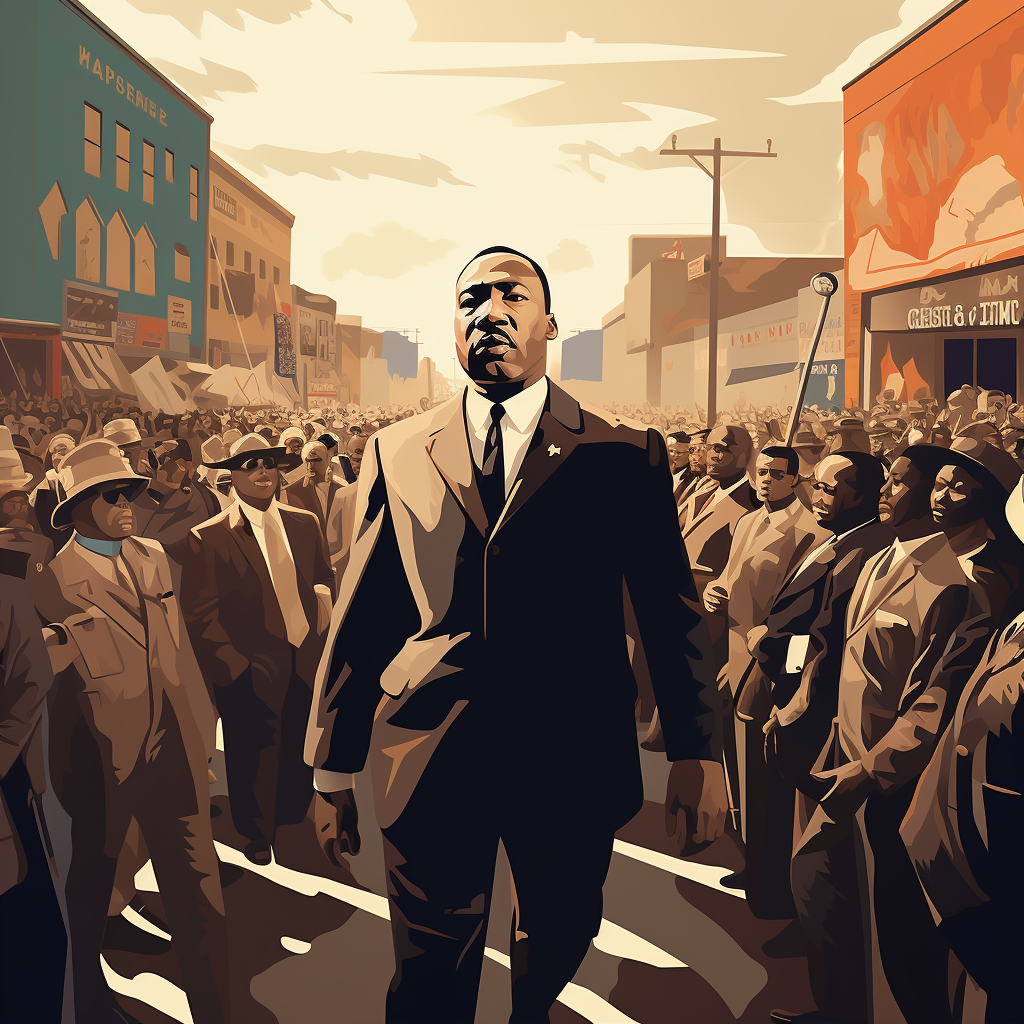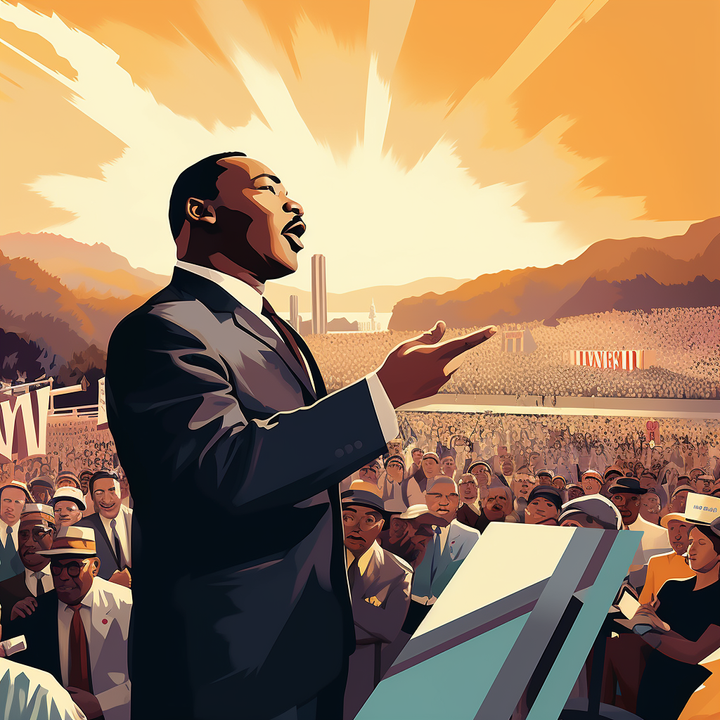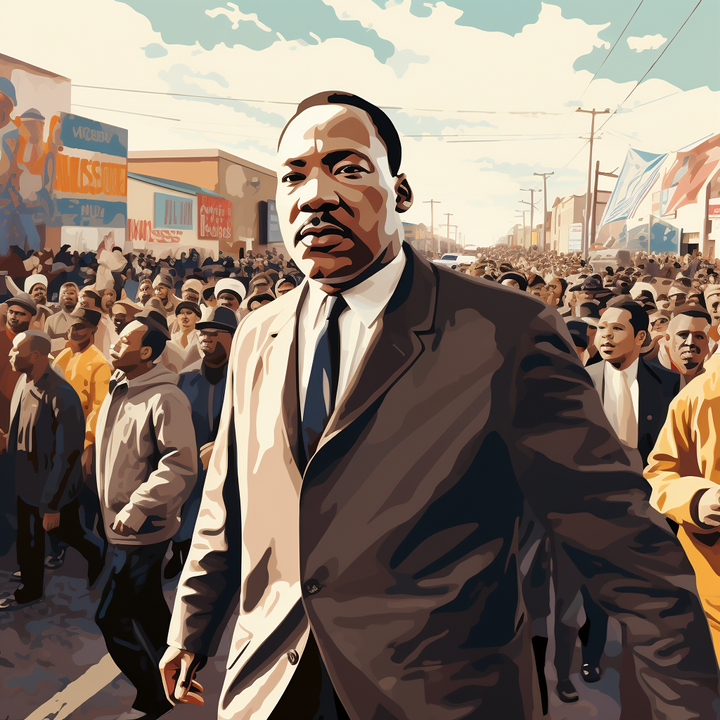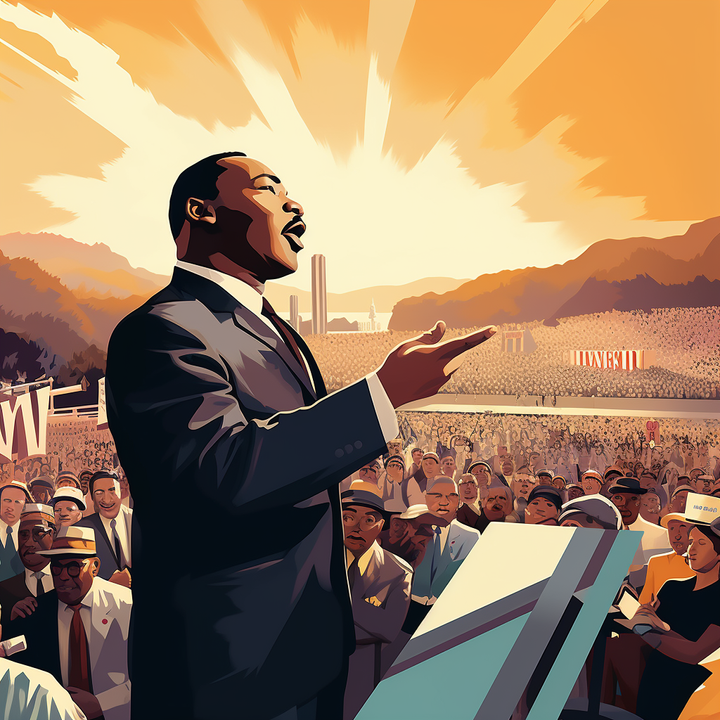Martin Luther King: Selma to Montgomery Marches

The Selma to Montgomery Marches of 1965, led by Martin Luther King Jr., stand as a monumental chapter in the history of the civil rights movement, epitomizing the courage and perseverance required in the struggle for justice and equality.
These marches, particularly set against the backdrop of significant opposition and danger, underscored King's unwavering commitment to the fight for voting rights and his fearless leadership in the face of adversity.
Factual Details of King’s Leadership in the Selma Marches
Year: 1965
Location: Selma to Montgomery, Alabama, USA
Event: Selma to Montgomery Marches for Voting Rights
The Selma Marches were a series of three protest marches that aimed to highlight the racial injustice in voting rights in the American South. The first march, famously known as "Bloody Sunday," saw peaceful demonstrators violently attacked by state troopers as they attempted to cross the Edmund Pettus Bridge. Despite the dangers, Martin Luther King Jr. led subsequent marches, demonstrating remarkable courage and resilience. These marches played a critical role in raising national awareness about the struggle for voting rights and led to the passing of the Voting Rights Act of 1965.
Key Outcomes:
- National and international attention was brought to the struggle for civil rights in the United States.
- The marches were instrumental in the passing of the Voting Rights Act of 1965.
- King's leadership during the marches cemented his status as a symbol of nonviolent resistance.
Leadership Lessons from King’s Selma Marches
Leadership in the Face of Danger:
- King’s role in the Selma marches, especially in continuing after "Bloody Sunday," demonstrated leadership that does not shy away from danger when pursuing justice.
Resilience in Advocacy:
- His perseverance, even after witnessing the brutality against peaceful protesters, highlighted the importance of resilience in advocacy work.
Mobilizing for a Cause:
- King’s ability to mobilize and lead thousands in nonviolent protest underscored the power of organized, peaceful demonstrations in effecting social change.
Focus on Long-Term Goals:
- Despite the immediate dangers and setbacks, King’s focus remained on the long-term goal of securing voting rights, showcasing the vision required in transformative leadership.
Symbol of Nonviolent Resistance:
- The Selma marches solidified King’s standing as a leading figure in nonviolent resistance and as a moral compass for the civil rights movement.
How Today's Leaders Can Use This Lesson
- Embrace the courage to lead, even in situations where personal safety or comfort is at risk, when fighting for justice and rights.
- Cultivate resilience and perseverance, understanding that setbacks and challenges are part of the journey toward achieving significant social changes.
- Recognize the power of peaceful, organized protest and mobilization in bringing about change.
- Maintain focus on long-term objectives, even when facing immediate obstacles or threats.
- Serve as a symbol of integrity and nonviolent resistance, inspiring others through your commitment and actions.
Concluding Thoughts
The Selma to Montgomery Marches, led by Martin Luther King Jr., remain a powerful example of the courage and perseverance necessary in the struggle for civil rights and social justice. King's leadership during these marches provides enduring lessons for contemporary leaders on the importance of steadfast, brave, and principled leadership in the face of formidable challenges.
Your Reflection
- Reflect on how you can demonstrate courage and perseverance in your leadership, especially when advocating for rights and justice.
- Consider ways to effectively mobilize and inspire others in support of a cause, using peaceful and strategic methods.
- Think about how to maintain focus on long-term goals while navigating immediate challenges and dangers.



